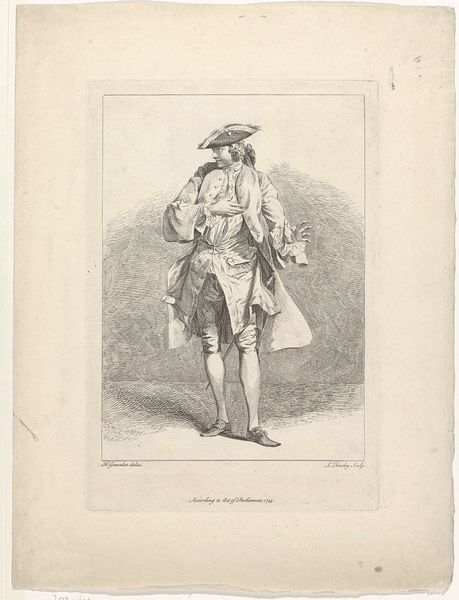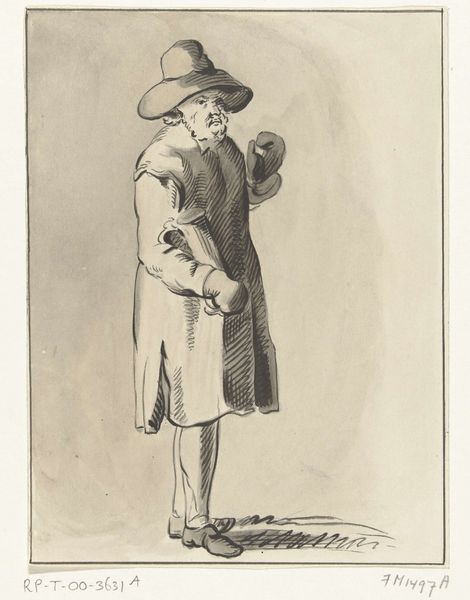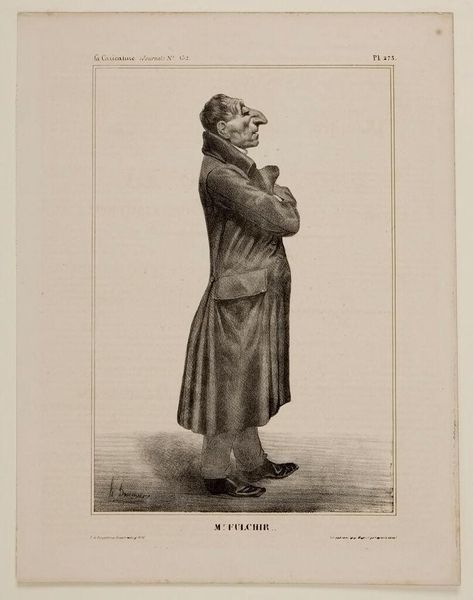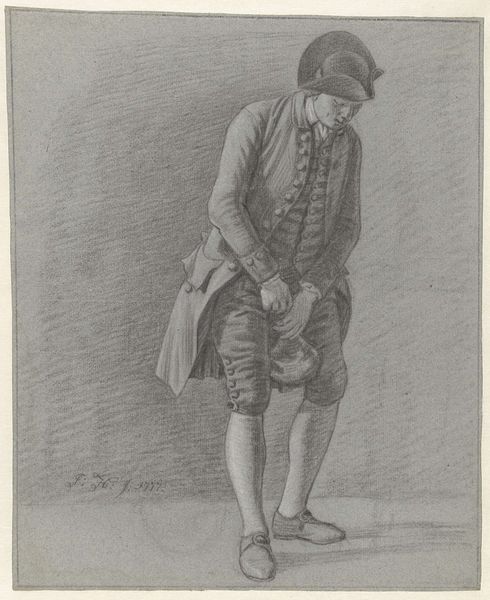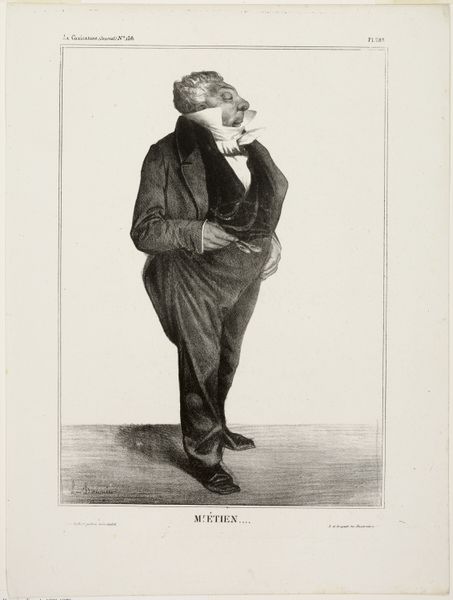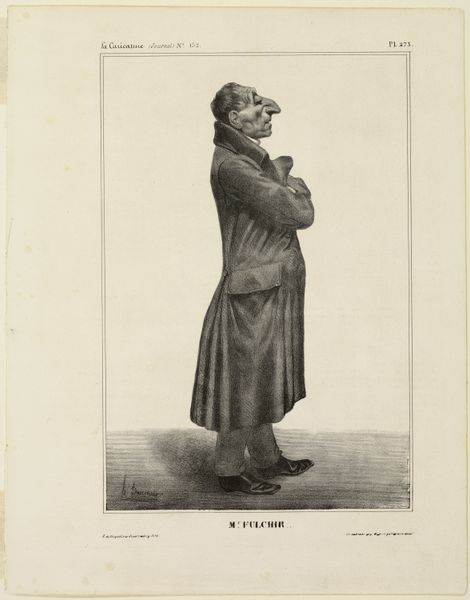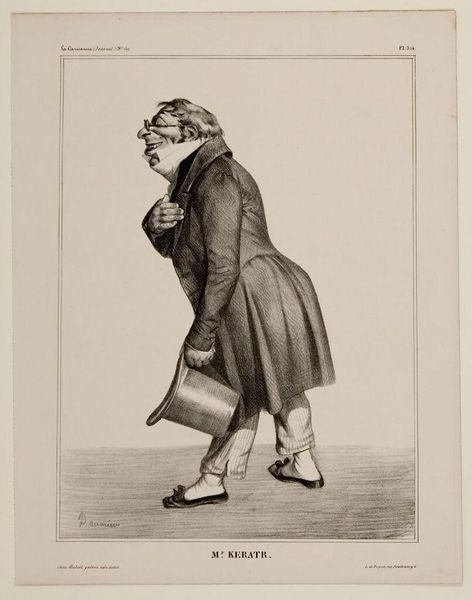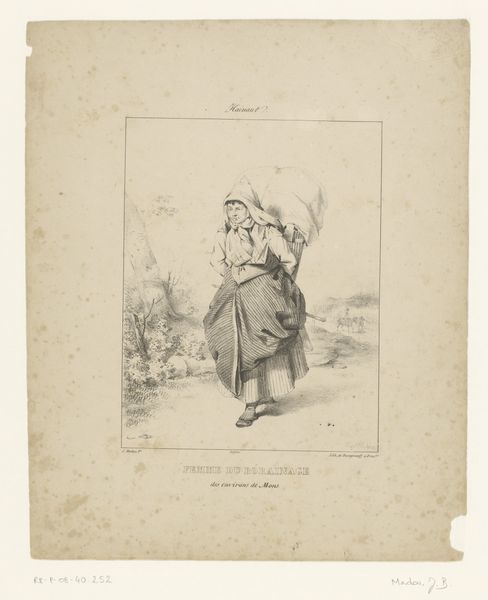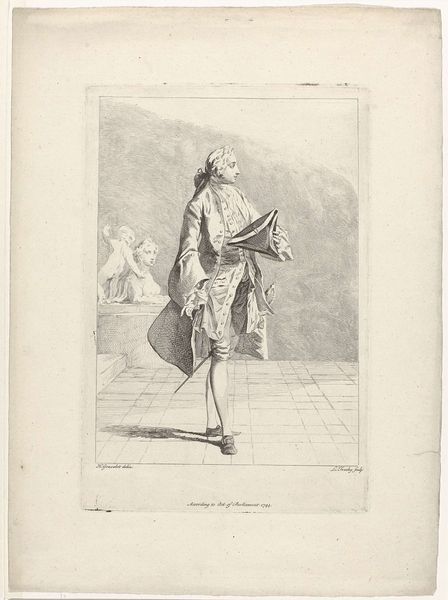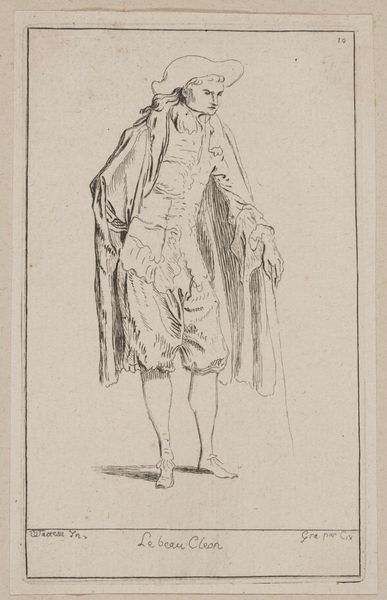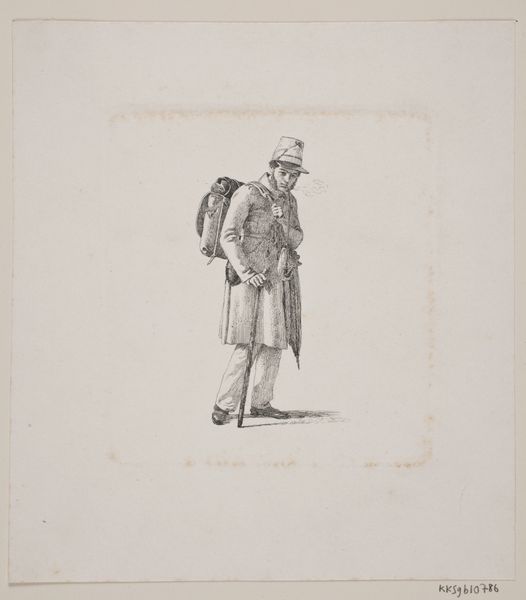
print, engraving
portrait
figuration
history-painting
engraving
Dimensions: height 277 mm, width 185 mm
Copyright: Rijks Museum: Open Domain
Editor: This engraving by Louis Truchy, made in 1744, is titled *Estampes de costumes, 1744, Pl. 1 (498)*. It depicts a man in what looks like formal 18th-century attire. He’s standing in a confident pose, almost like he’s on a stage. How do you interpret this work? Curator: This print offers us a glimpse into the meticulously constructed identities of the 18th century. Truchy’s detailed rendering of costume isn't just documentation; it speaks volumes about the wearer's social standing, political allegiances, and performance of masculinity. What do you notice about his attire in relation to societal norms of the time? Editor: Well, his clothes look expensive and elaborate, which, to me, suggests he's probably wealthy and important. And the way he carries himself seems deliberate. Curator: Exactly. Costume in this period was a powerful tool, wasn’t it? It signaled adherence to or deviation from social codes. Considering this was produced during a period of strict social hierarchy, how might this image function as a form of cultural propaganda or aspiration? And consider its connection to the male gaze. Editor: Propaganda, you say? It feels more… aspirational. It's like showing what one could be if they attained a certain status. So is the print reinforcing existing power structures by glorifying the elite? I hadn’t thought about the power dynamics quite like that. Curator: Precisely. The fashion here serves more than just decorative value; it actively participates in reinforcing and perpetuating these societal values and class distinctions. Also, who has access to such portrayals? Editor: So this engraving, while seemingly just a portrait of a fashionable man, is actually deeply intertwined with the social and political context of its time, highlighting the power of clothing to communicate status and aspiration? It really makes you wonder about who these images were meant for and how they shaped perceptions of power. Curator: Indeed, art often presents itself as more than what immediately meets the eye; unpacking the underlying social narratives unveils the broader and more critical role art plays in our collective understanding of historical and ongoing socio-political events.
Comments
No comments
Be the first to comment and join the conversation on the ultimate creative platform.
